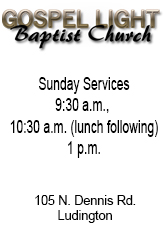
Todd Reed’s iconic photo created on Nov. 10, 1975.
Great Lakes History Log is presented by Filer Credit Union with offices in Manistee, Ludington, East Lake, and Bear Lake and the Mason County Historical Society, which operates the Port of Ludington Maritime Museum, Historic White Pine Village and the Rose Hawley Archives in downtown Ludington.
By Rob Alway, Editor-in-Chief
LUDINGTON — As Nov. 10 approaches, many in the Great Lakes region are rightfully focused on commemorating the 50th anniversary of the sinking of the S.S. Edmund Fitzgerald and the events that transpired that day on Lake Superior. But, the storm that tragically took the 29 crew members of that beloved ship was not isolated to Lake Superior. It was actually a regional storm. Earlier that day, one of the three storm fronts was making its way up Lake Michigan, reeking havoc along the way.
Two young reporters, Todd Reed and Vans Stevenson, were writers/photographers at the Ludington Daily News. They, along with Managing Editor Paul S. Peterson, covered the local impact of the storm. The results of that coverage included Reed’s iconic storm photo capturing waves crashing over the 57-foot-high Ludington North Breakwater Lighthouse, completely covering the breakwater. To this day, 50 years later, it continues to be his favorite storm photograph.
A few weeks ago, Reed and Stevenson met me at the Port of Ludington Maritime Museum to discuss Nov. 10, 1975 where we filmed the two for MCP’s Great Lakes History Log YouTube channel (see that video here). I figured the museum was a fitting setting for the interview as it featured the newly opened Age of Steam exhibit which includes an incredible model of the Fitzgerald built by Ken Jilbert of Manistee. Additionally, the museum building served as Coast Guard Station Ludington from 1934 to 2004. The location has further symbolism because Reed spent the majority of his 33 years in the U.S. Coast Guard Reserves assigned to that station.
In the morning of Monday, Nov. 10, 1975, Stevenson woke up about 6 a.m. to what sounded like somebody trying to break into his apartment. Stevenson was fresh out of college, a graduate of the University of Ohio journalism school. Up until recently, Ludington had been his second home as his family had owned a cottage at Epworth Heights since the 1890s. However, a few years earlier, while still in high school, his mother, Frances Stevenson, had suggested he get a summer job at the newspaper. She had spent many summers in the 1940s as the Epworth reporter for the LDN.
Now, Ludington was his home. He was living in one of the Pelter Apartments at the corner of Ludington and Washington avenues.
“I thought somebody was breaking into the apartment, but it was just the wind,” he recalled. “I had never heard the winds like that.”
Monday morning tradition was to meet Managing Editor Paul S. Peterson and other editorial staffers at Bach’s Bakery on Foster Street before heading into the office on North Rath Avenue.
“I started west down Ludington Avenue and was driving downtown when I witnessed the door blow off of a gentleman’s car. The door just continued to tumble down the street,” Stevenson said. “At that point, I wondered what the conditions were like out at Epworth.”
Stevenson drove out to the resort, closed for the season, and made his way to South Beach. There, he witnessed waves crashing over the seawall and over the top of cottages. He braced himself against a cottage and started shooting pictures. One of those pictures made the front page of the newspaper the next day.
Reed, who grew up in Ludington and had graduated from Michigan State University, was in his fifth year at the newspaper. The young reporter was gaining a reputation for having a good eye for photography, working closely with Chief Photographer Russ Miller.

Todd Reed, left, and Vans Stevenson.
On that particular day, he spent several hours 60 miles away in Chase, eastern Lake County, covering a story about PBT contamination of a farmer’s herd.
“The farmer’s animal feed had been contaminated by PBT causing illness in his family,” Reed said. “They weren’t getting enough response from the government. So, the farmer and his neighbors dug a trench and shot all his 108 cows dead. They could have slaughtered the herd and sold the meat. But, they didn’t want to risk further contamination. The story was national news.”
Reed made his way back into Ludington and was feeling pretty good about the farmer story. In the 45 minute ride home he had been working up the story in his head and knew it would make the front page the next day. Except, it didn’t. It got bumped to page 2. Bigger events were brewing.
As Reed entered downtown Ludington he glanced at the lakeshore.
“From the middle of downtown I could see the waves from Lake Michigan. Instead of turning north onto Rath Avenue and make my way to the shoreline.”
Reed found a vantage point and started documenting that iconic day.
“I could hardly stand up,” he said.
The Ludington harbor was no protection against the weather that day. The photograph shows high waves in the harbor itself with waves crashing behind the lighthouse. The piers are nowhere to be seen, covered completely in water.
“I remember watching the Spartan come in a little earlier,” Stevenson recalled, referring to the S.S. Spartan car ferry. “It came in just before the storm got really bad, but she couldn’t dock. Instead she beached at Buttersville for the next 12 to 15 hours.”
In 1975, Crosswinds condominiums did not exist and most of the Buttersville Peninsula was open land. It was common for car ferry captains to beach the boats on the eastern shore of Buttersville during inclement weather or while waiting for an open slip.
“The channel was half the width as it is today,” Reed said. “I remember being on watch at the Coast Guard station and watching the boats come in during a storm, running nearly full speed, threading this needle, then making the turn so they could navigate to beach the boat. It was incredible to see. Those captains and the crews were masters at what they did.”
However, the three C&O Railroad car ferries would not be traveling again on Nov. 10, 1975.
It is well documented that the Edmund Fitzgerald was one of the most beloved freighters on the Great Lakes. The 729 foot long vessel began service on Sept. 24, 1958. At that time, she was the longest ship on the Great Lakes. It was owned by Northwestern Mutual Life Insurance Company and operated by Columbia Transportation Division of Oglebay Norton Company of Cleveland, Ohio.
The Fitzgerald left Superior, Wis. at 2:15 p.m. on Sunday, Nov. 9, 1975. The temperatures were in the 70s, unusual for early November. Under the command of Capt. Ernest M. McSorley (1912-1975), the ship was carrying a full load of taconite ore pellets and heading to Zug Island in Detroit. After that trip, McSorley was scheduled to retire.

The Edmund Fitzgerald
By 5 p.m. that afternoon, the Fitzgerald was running near the Arthur M. Anderson, commanded by Capt. Jesse B. Cooper, which was destined for Gary, Ind.
As the National Weather Service started issuing gale warnings, both captains made the decision to take the longer northerly route close to the Ontario shore. Conditions on Lake Superior continued to worsen and by 7 p.m. radio and radar contact with the Fitzgerald was lost.
Reed said he has spent the last 50 years studying the storm.
“This storm was the accumulation of three fronts that all met over White Fish Bay,” Reed said. “It was for all practical purposes the ‘perfect storm’.”
Stevenson said there was a feeling of shock when he and his fellow reporters heard the news of the sinking of the Fitzgerald.
Reed said the newspaper covered the national Associate Press story but also, in its usual fashion, put a local angle on the story as well.
Editor Paul S. Peterson was a history buff and also the son of a carferry crewman. Peterson’s story featured an in-depth comparison to the famed Armistice Day storm that occurred, ironically, on Nov. 11, but 35 years prior, in 1940. During that storm, three ships were sunk between Ludington and Little Point Sable while one of the car ferries, the City of Flint 32, was forced to beach on the shore.
“The storm on Nov. 10, 1975 had the second-lowest barometer reading recorded at Ludington,” Reed said. “The lowest was on Nov. 11, 1940.”
Reed and Stevenson will be the keynote speakers at the annual meeting of the Mason County Historical Society, scheduled for Thursday, Dec. 4. The evening event will be open to the public. For more information visit the historical society’s website.


The Mason County Historical Society is a non-profit charitable organization that was founded in 1937 that does not receive any governmental funding. It owns and operates the Port of Ludington Maritime Museum in Ludington, Historic White Pine Village in Pere Marquette Township, and The Rose Hawley Archives and the Mason County Emporium and Sweet Shop in downtown Ludington.
For more information about donating to and/or joining the Mason County Historical Society, visit masoncountymihistory.org.
_________________
Please Support Local News
Receive daily MCP and OCP news briefings along with email news alerts for $10 a month. Your contribution will help us to continue to provide you with free local news.
To sign up, email editor@mediagroup31.com. In the subject line write: Subscription. Please supply your name, email address, mailing address, and phone number (indicate cell phone). We will not share your information with any outside sources. For more than one email address in a household, the cost is $15 per month per email address.
We can send you an invoice for a yearly payment of $120, which you can conveniently pay online or by check. If you are interested in this method, please email editor@mediagroup31.com and we can sign you up. You can also mail a yearly check for $120 to Media Group 31, PO Box 21, Scottville, MI 49454 (please include your email address).
Payment must be made in advance prior to subscription activation.
We appreciate all our readers regardless of whether they choose to continue to access our service for free or with a monthly financial support.
_____
This story and original photography are copyrighted © 2025, all rights reserved by Media Group 31, LLC, PO Box 21, Scottville, MI 49454. No portion of this story or images may be reproduced in any way, including print or broadcast, without expressed written consent.
As the services of Media Group 31, LLC are news services, the information posted within the sites are archivable for public record and historical posterity. For this reason it is the policy and practice of this company to not delete postings. It is the editor’s discretion to update or edit a story when/if new information becomes available. This may be done by editing the posted story or posting a new “follow-up” story. Media Group 31, LLC or any of its agents have the right to make any changes to this policy. Refer to Use Policy for more information.




















































.png)
